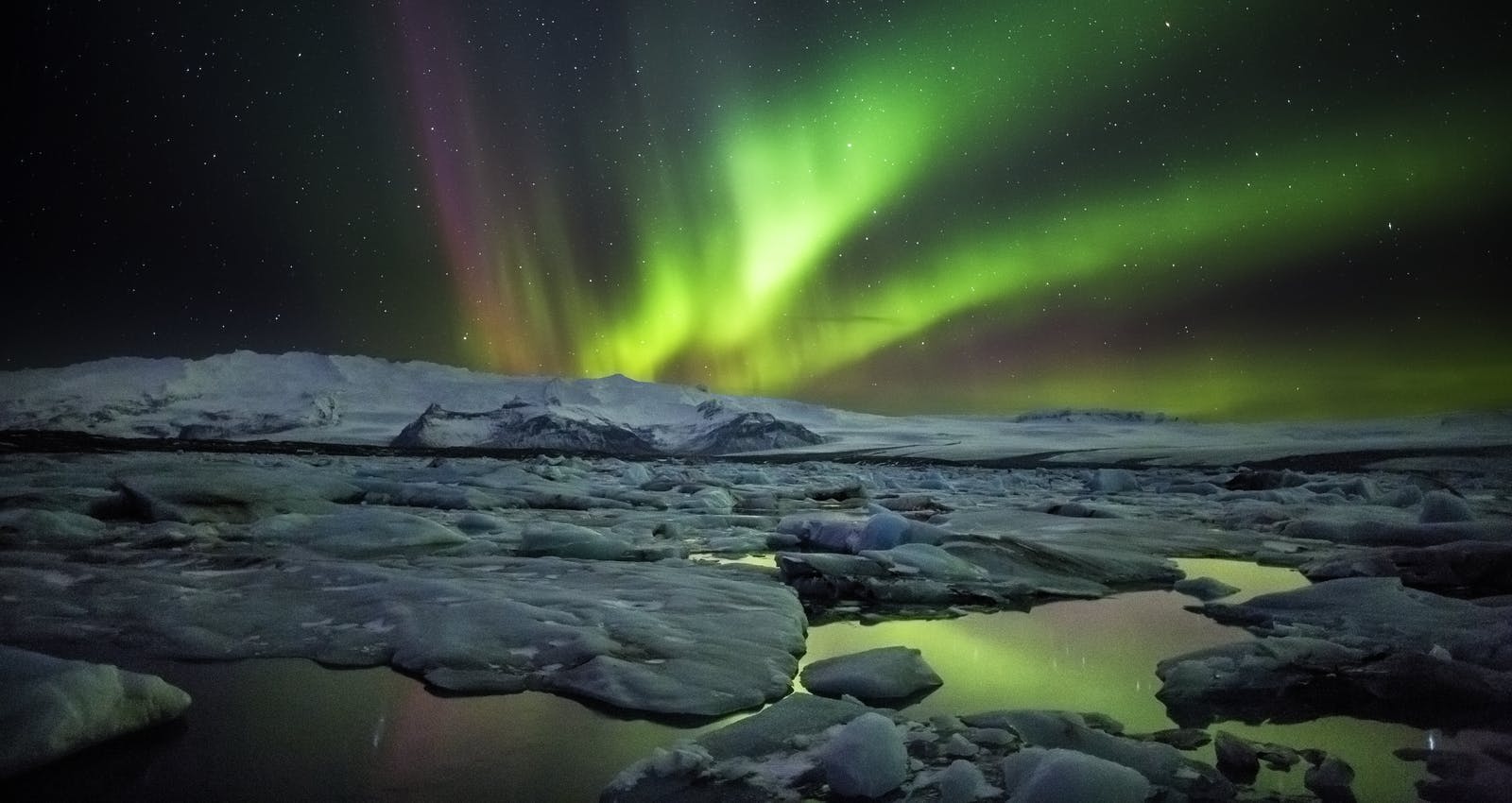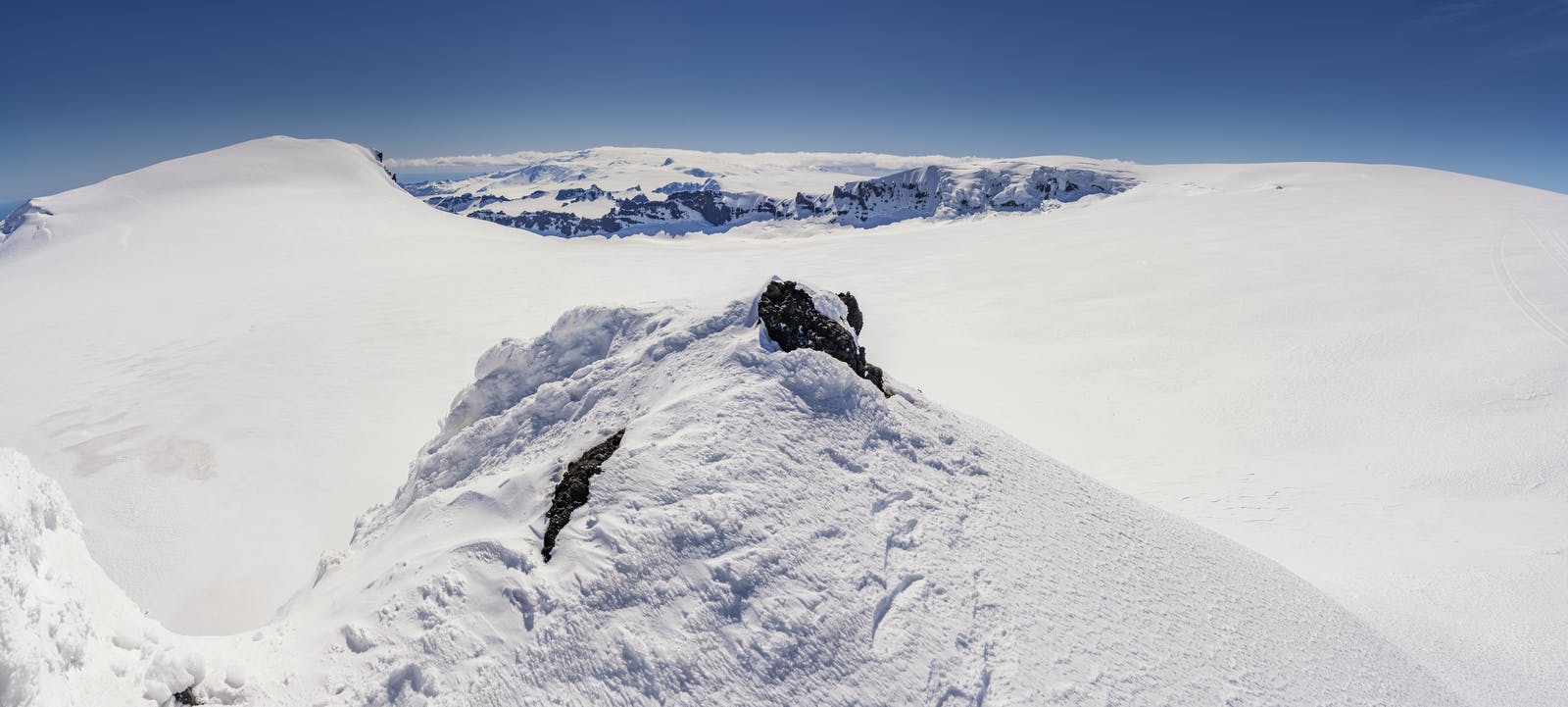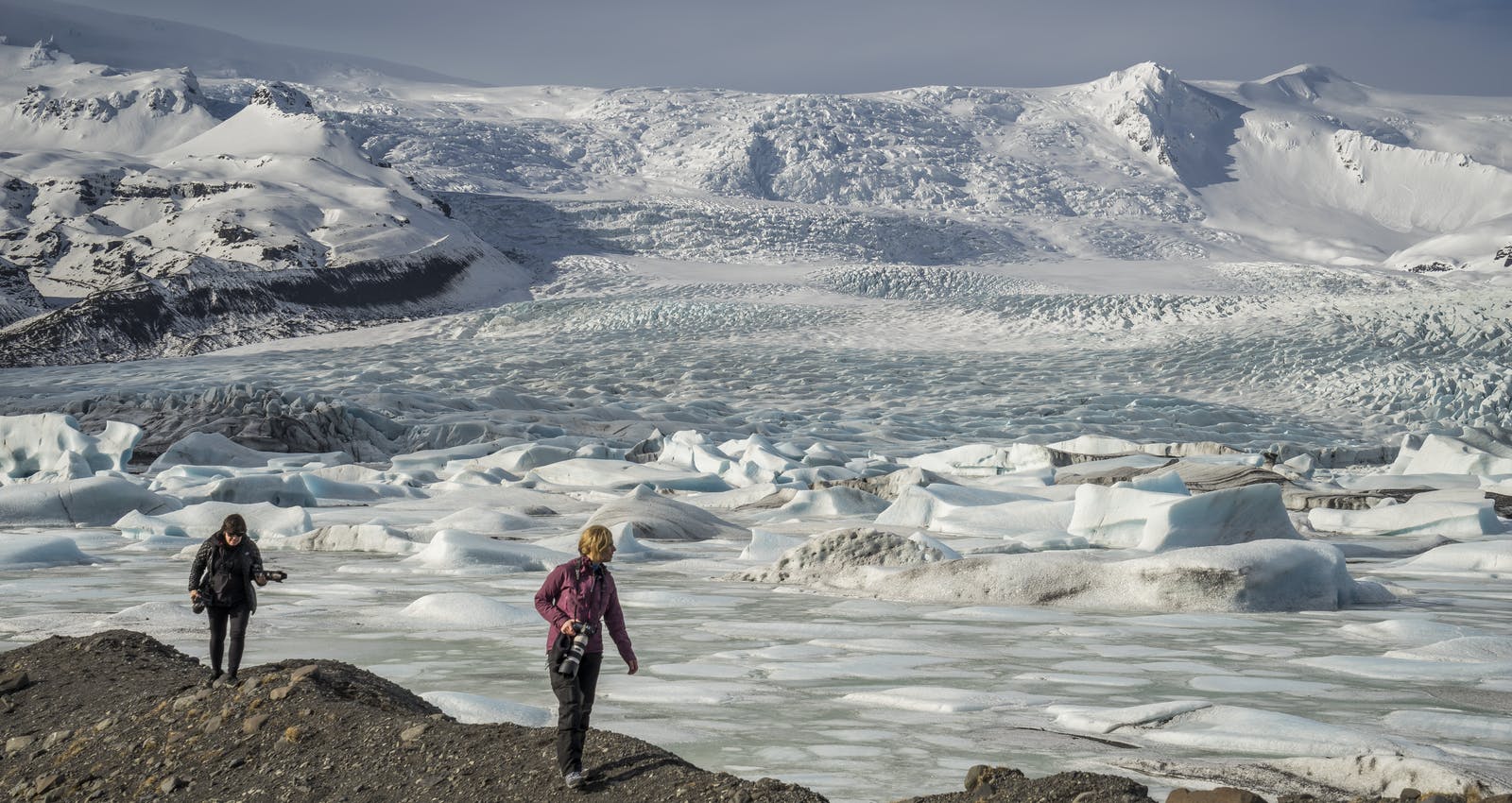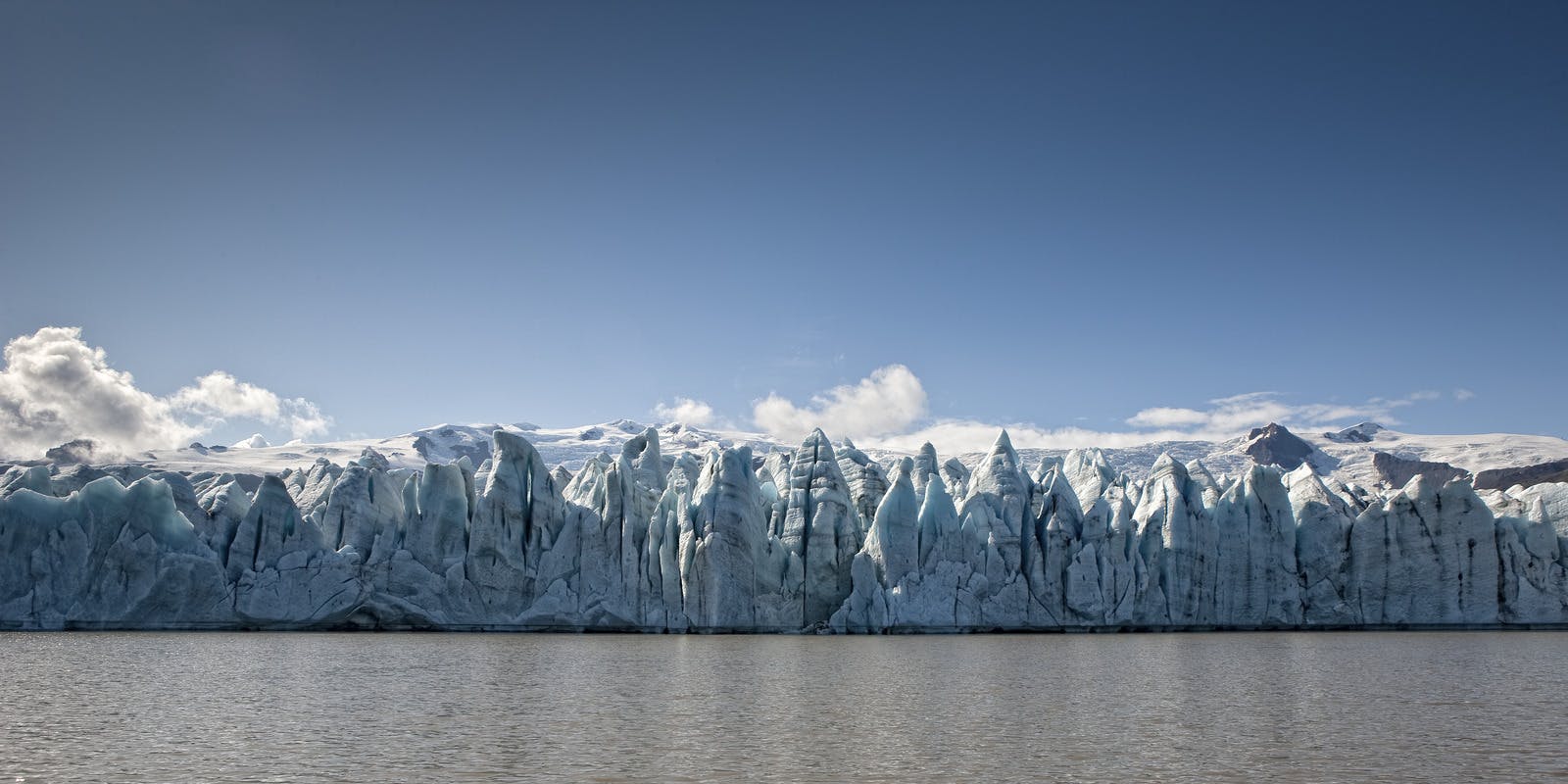
Guide to Iceland's Fjallsjökull Glacier
Nestled in the rugged and breathtaking landscape of Iceland, Fjallsjökull stands as one of the country's most awe-inspiring glacial wonders. This colossal ice cap, located in the southeastern part of Iceland, holds both scientific significance and captivating beauty, making it a prime destination for tourists seeking to explore the Arctic splendour. Fjallsjökull is situated in the expansive Vatnajökull National Park, renowned for its diverse geological features. Specifically, Fjallsjökull is a southern outlet glacier of the larger Öræfajökull ice cap, which is an integral part of the Vatnajökull glacier, Europe's largest ice cap by volume.
Fjallsárlón

Adjacent to Fjallsjökull lies the captivating Fjallsárlón, a glacial lagoon that mirrors the glacier's splendour. Formed by the melting ice from Fjallsjökull, Fjallsárlón showcases floating icebergs, creating a serene yet dynamic aquatic landscape. The lagoon, with its crystal-clear waters and ice sculptures, is a testament to the ongoing transformations within the glacial realm.
Fjallsárlón offers a unique perspective on the glacial ecosystem. Boat tours take visitors on tranquil journeys through the lagoon, allowing them to navigate among the drifting icebergs. The proximity to the glacier enhances the experience, providing an intimate encounter with the remnants of Fjallsjökull's frozen legacy. The glacial lagoon, often less crowded than its famous counterpart, Jökulsárlón, provides a serene and reflective atmosphere for those seeking a more secluded experience.
Scientific Significance

From a scientific perspective, Fjallsjökull is a fascinating subject for the study of glacial dynamics and topography. The glacier's movements, crevasses, and ice formations provide valuable insights into the processes shaping Iceland's glacial landscapes. Researchers and glaciologists explore Fjallsjökull to understand the intricate interactions between ice, rock, and water that contribute to the glacier's ever-changing features.
Fjallsjökull is not immune to the impacts of climate change. Rising temperatures and changes in precipitation patterns affect the glacier's mass balance, leading to melting and retreat. Scientific monitoring stations are established in the vicinity to collect data on Fjallsjökull's response to environmental changes, contributing to a broader understanding of the effects of global warming on glaciers worldwide.
Hydrological Significance
As a component of Vatnajökull, Fjallsjökull plays a crucial role in Iceland's hydrological system. The glacier acts as a natural reservoir, storing freshwater that gradually releases into rivers and lakes. This hydrological contribution influences the region's water resources and sustains ecosystems downstream, making Fjallsjökull an integral part of Iceland's environmental and geological balance.
What To Do at Fjallsjökull

Guided Tours and Hiking
Guided tours are a popular way for tourists to experience Fjallsjökull's magnificence. Knowledgeable guides lead visitors on excursions, providing insights into the glacier's geological history, unique features, and the interconnectedness with Öræfajökull volcano. Hiking opportunities abound, allowing enthusiasts to traverse the icy terrain and witness the glacier's beauty up close.
Ice Cave Explorations
One of the highlights of visiting Fjallsjökull is the chance to explore its mesmerising ice caves. These natural formations, sculpted by the glacier's movements and meltwater, create a stunning underworld of crystalline blue hues. Tour operators offer specialised ice cave excursions, allowing participants to venture deep into the glacier and marvel at its intricate formations.
Photography and Northern Lights Viewing
The photogenic appeal of Fjallsjökull is heightened by the opportunity for stunning photography. The glacier's icy surfaces, juxtaposed against Iceland's dramatic landscapes, provide a canvas for captivating images. Moreover, being in proximity to the Arctic Circle, Fjallsjökull offers an ideal location for witnessing the enchanting Northern Lights, adding another layer of allure for nocturnal visitors.
Local Economy and Sustainable Tourism
The influx of tourists to Fjallsjökull has a significant impact on the local economy. Businesses in Höfn and surrounding areas benefit from the tourism industry, offering accommodations, dining, and various services. To ensure the sustainability of tourism, there is a growing emphasis on responsible practices, with initiatives aimed at preserving the delicate ecosystems around Fjallsjökull.
Experience the Ice Caves and Glaciers
Perlan Museum in Reykjavík is a museum where you can experience all kinds of Icelandic nature in one place. Ice caves, a naturally occurring wonder, form during the winter months within glaciers as meltwater streams sculpt these stunning caverns. At Perlan, visitors can safely witness a genuine ice cave in a secure environment.
Distinguished as the world's inaugural ice cave of its kind, the Perlan ice cave spans 100 meters and is crafted from more than 350 tons of snow sourced from Icelandic mountains.
Embarking on a journey into an ice cave is a truly enchanting experience that every visitor to Iceland should embrace and appreciate.
FAQ

What Is the Meaning of Fjallsárlón?
Fjallsárlón, when translated, means "Glacier River Lagoon" in Icelandic. This glacial lagoon, nestled near the Fjallsjökull glacier, offers a serene and picturesque setting with floating icebergs and stunning reflections on the water.
Can You Visit Langjökull Glacier On Your Own?
Yes, Langjökull Glacier is accessible for independent exploration. Visitors have the option to embark on self-guided adventures to witness the glacier's grandeur. Read more about Langjökull Glacier here.
How Do I Get to Svínafellsjökull?
To reach Svínafellsjökull, one can typically travel by car from the nearest towns, such as Höfn or Skaftafell, which are common starting points for excursions to Vatnajökull National Park. Learn more about Svínafellsjökull here.
How Do I Get to Langjökull Glacier?
Langjökull Glacier is accessible by road, and reaching it usually involves driving from Reykjavik or nearby towns. The journey may take a few hours, and travellers need to follow the appropriate roads leading to the glacier. Read more about Langjökull Glacier here.
Popular articles

Reykjanes Volcanoes Overview
Enjoy a complete overview of the Reykjanes Volcanoes from 2021-2024. Learn about its geology, recent activity, and visitor tips for a safe, memorable experience.

Reykjanes Peninsula Volcanoes: Sundhnúksgígar Eruptions
The anticipated volcano has erupted in the Reykjanes Peninsula, the site is being called Sundhnúkagígar. See the historic insights on the seismic activity and volcanic eruptions.

Earthquakes in Iceland
Earthquakes in Iceland are a fact of life. Each year, hundreds of small tremors shake the earth, a reminder of the country’s position on a tectonic plate boundary.

Volcano Museums and Exhibitions in Iceland
If you don't manage to visit an actively erupting volcano in Iceland - Experience its force at one of these excellent volcano museums and exhibitions in Iceland.

Top 10 Places To See the Northern Lights in Iceland
You can see the northern lights across the country, but some spots are more suitable than others. Find the best place to see the northern lights in Iceland.

Ice Caves From Reykjavik
Travel beyond the capital for a closer look at an ice cave under one of Iceland’s glaciers. If you can’t spare the time, experience Perlan’s ice cave in Reykjavik.